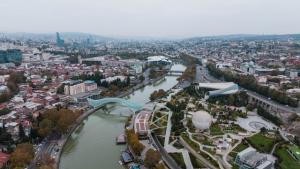Mapping air pollutant emission sources of a given country can help experts and decision-makers understand which policies are most viable. Spatial allocations of emissions are also important to understand where emissions are coming from on a regional level.
Spatially allocating – or gridding – emissions is technically complex. It requires applying the gridding matrix to the inventory emissions to transform source-based inventory emissions to gridded emissions.
Under the UNECE Convention on Long-range Transboundary Air Pollution (Air Convention), Parties now report gridded emissions in a 0.1° x 0.1° longitude-latitude spatial resolution. The fine resolution can help attribute emissions more precisely on the map.
To assist Georgia in developing gridded emissions, UNECE organized a workshop in Tbilisi last week (2-4 April 2024). The training programme for the workshop focused on practical work to compile, calculate and spatially allocate emissions with a geographic information system (GIS) for point, area and line sources, covering a number of activities in various sectors. The training was preceded by a webinar introducing the methods and tools used to collect and process relevant data for the calculation of grid emissions and emission projections (12 March 2024).
For more information on capacity-building under the UNECE Air Convention, please visit: http://www.unece.org/environmental-policy/conventions/envlrtapwelcome/capacity-building.html


